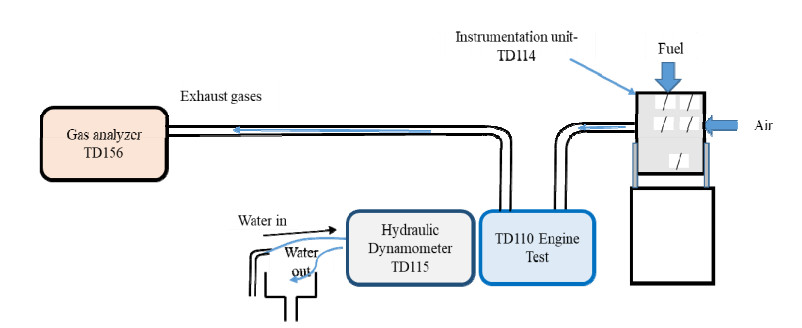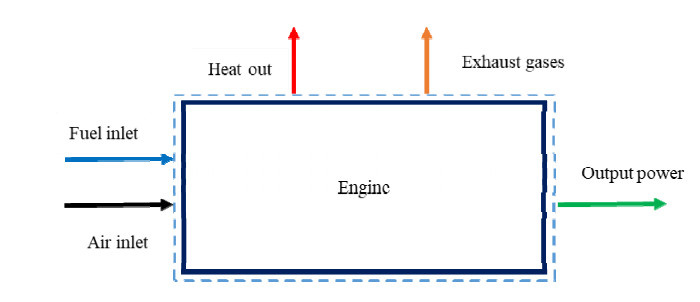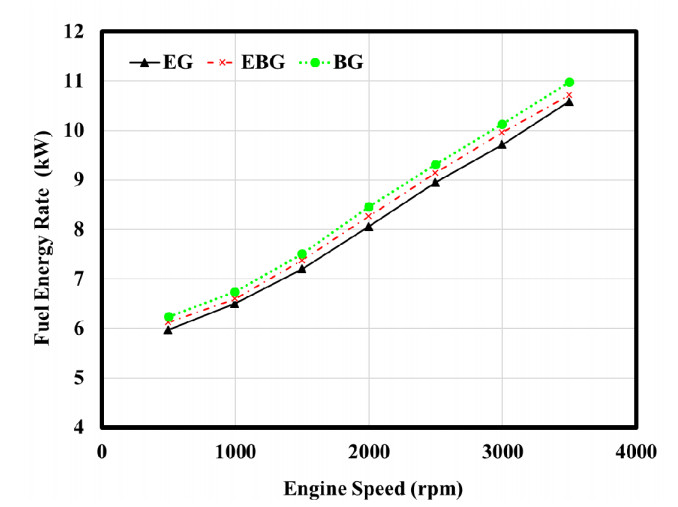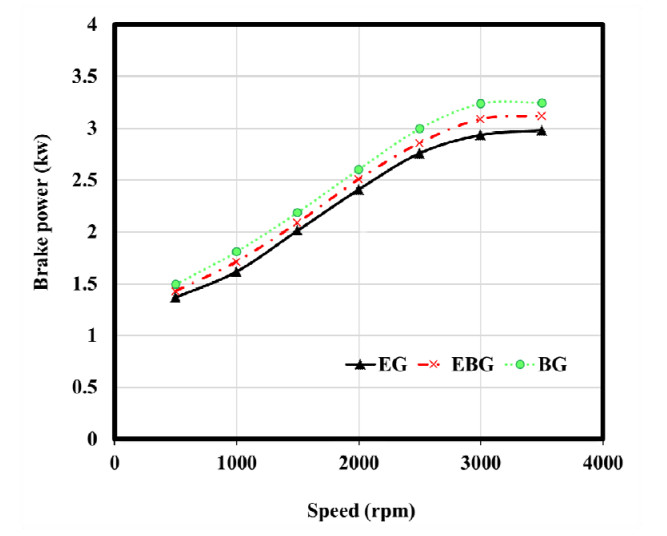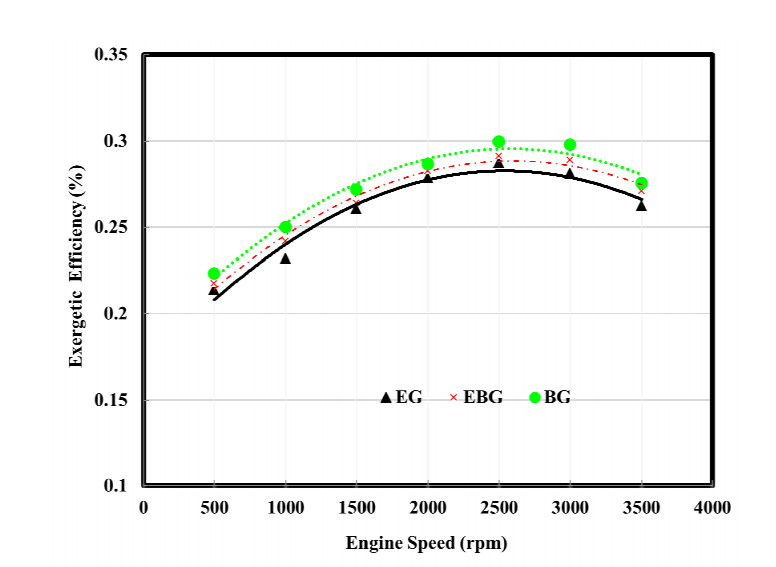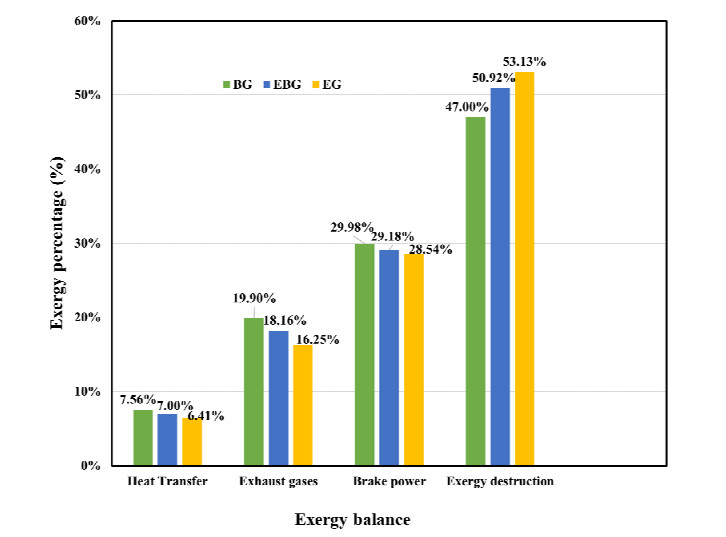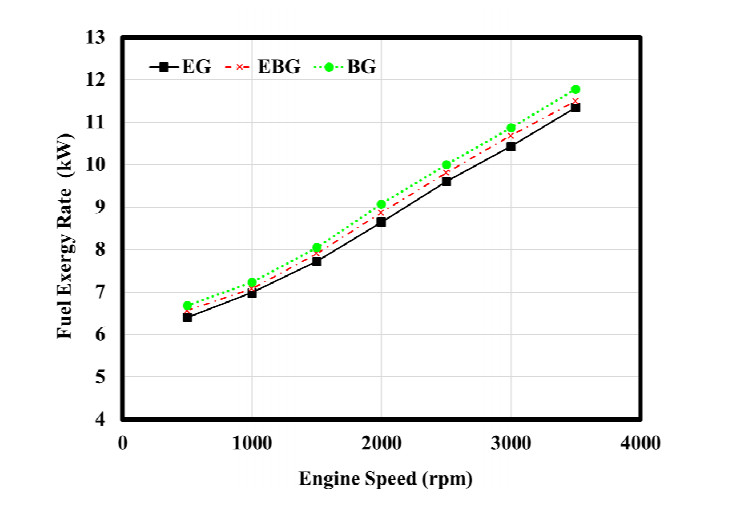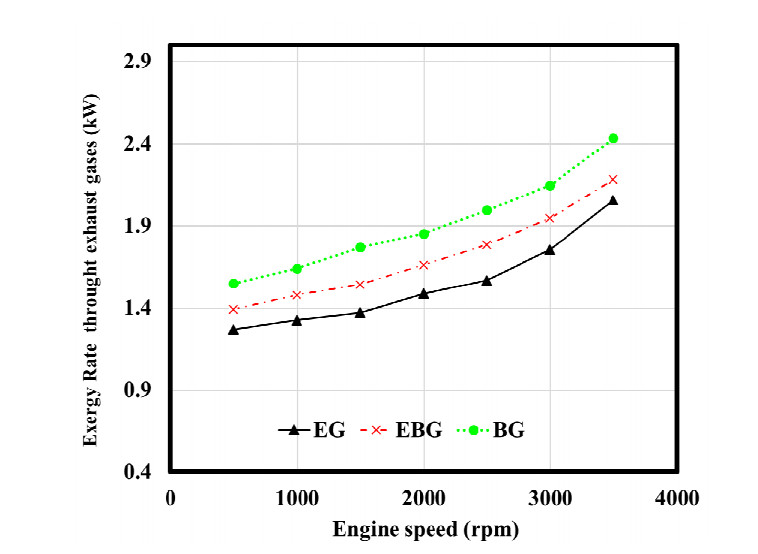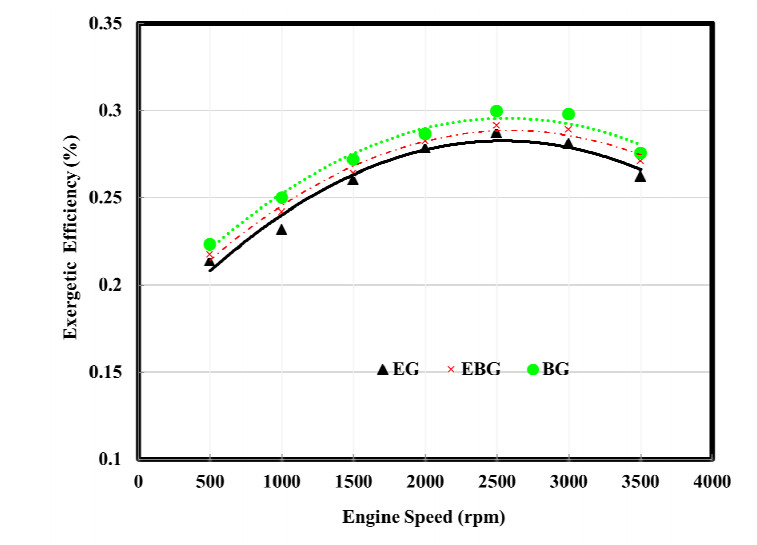Fluctuation scaling has been observed universally in a wide variety of phenomena. In time series that describe sequences of events, fluctuation scaling is expressed as power function relationships between the mean and variance of either inter-event intervals or counting statistics, depending on measurement variables. In this article, fluctuation scaling has been formulated for a series of events in which scaling laws in the inter-event intervals and counting statistics were related. We have considered the first-passage time of an Ornstein-Uhlenbeck process and used a conductance-based neuron model with excitatory and inhibitory synaptic inputs to demonstrate the emergence of fluctuation scaling with various exponents, depending on the input regimes and the ratio between excitation and inhibition. Furthermore, we have discussed the possible implication of these results in the context of neural coding.
1.
Introduction
The increase in energy demand, combined with the increasing depletion of energy sources, has led to the search for alternative energy sources. Recently, it has been observed rising in percentage for the depletion of fuel, hence, the idea of using alternative fuels has become required. Alcohols are an attractive alternative to gasoline fuel because they have the closest advantages to petrol fuel [1]. Despite this, many studies have shown that the alcohol-diesel blend engine could be used as an alternative fuel [2,3,4]. However, alcohol is used as fuel instead of gasoline, because it is cleaner than gasoline and has lower CO, HC, and NOx emissions [5,6,7,8]. Numerous studies have investigated the properties of alcohol. These properties include low harmful emission, low heating value compared to gasoline, and high octane numbers compared with that of the gasoline [9]. Methanol, butanol, and ethanol are kinds of alcohol easily obtainable from many fossil and renewable sources including coal, natural gas, agricultural biomass products [10].
Numerous previous studies have examined performance and emissions of the engines fueled various types of alcohol-gasoline such as ethanol, methanol, and butanol. Al-Hasan [11] and Yucesu et al. [12] found the engine's performance improved when fueled by ethanol-gasoline. They also indicated that at 80 percent gasoline-20 percent ethanol fuel blend, the maximum enhancement occurring. Osman et al. [13] and Abu-Zaid et al. [14] stated that the brake specific fuel consumption increased when the engine was fueled methanol-gasoline blending compared to that of the gasoline. Furthermore, they demonstrated that the maximum braking power in the spark-ignited engine occurs within a range of 15 per cent methanol and 85 per cent gasoline blend. Wu et al. [15] also examined adding ethanol to gasoline fuel under various air-fuel equivalence ratios. They found that air-fuel equivalence influences the performance of the engine particularly when it is slightly smaller than one. Moreover, they concluded that adding ethanol to gasoline would improve engine performance. Dernotte et al. [16] introduced for the evaluation of the a spark engine fueled with butanol-gasoline blend. They found that there are improvement in the engine performance with using butanol-gasoline blend compared with that of the gasoline fuel. Nazzal [17], Balki et al. [18], and Elfasakhany [19] also demonstrated that there is an enhancement in engine performance by adding methanol and ethanol to gasoline. Furthermore, they have been found that the use of alcohol fuels increased the brake specific fuel consumption, engine torque, combustion efficiency, and thermal efficiency. Varol et al. [8] introduced a comparison study on the effect of methanol, ethanol, and butanol blending on the performance and emission of the spark-ignition engine. They revealed that when fueled with butanol-gasoline, the engine’s performance was higher than that of the ethanol-gasoline blend. Tornatore et al. [20] studied the influence of the adding butanol on the combustion process. They indicated that the butanol is strong substitute of the gasoline in terms of the performance and the emissions. Siwale et al. [21] investigated the effect of the n-butanol-methanol-gasoline blended fuels on emissions and the performance of a spark-ignition engine. They found that the engine performance increased and emissions decreased when using those of fuel blends compared to using pure gasoline. Elfasakhany [22] introduced an investigation into the influence of ethanol-methanol-gasoline blends and butanol-gasoline blends on a spark-ignition engine's emissions and performance. He found that the highest engine performance and lowest emissions with using n-butanol-iso-butanol-gasoline, compared to other fuels blending. While the gasoline provided the lowest engine performance. Moreover, methanol-ethanol-gasoline blends provided a moderate level of power. Irimescu et al. [23] presented an investigation on the butanol and ethanol on the emissions and performance of the engine. They observed that the butanol and ethanol influence the flame propagation. Moreover, the engine speed on the alcohol fueling. Saraswat et al. [24] introduced a comparative investigation for using butanol and algae oil as alternative fuel in the engines. They assessed that the adding butanol to the gasoline lead to improve in the engine performance and emissions. While adding algae to the gasoline lead to the in the brake specific consumption and reduced in the brake power.
The above-mentioned previous studies on spark-ignited engine performance were based on the first law of thermodynamics, which is not enough since the losses were ignored. Thereby, several studies were carried out on the losses and its location in the internal combustion engines based on the second law of thermodynamics. These losses are due to processes of irreversibility such as turbulence inside the combustion chamber, gas expansion, pressure drop etc. [25]. The second law of thermodynamics was utilized to be considered these losses and their location in the engines which were based on the exergy analysis [26]. Several studies have recently been conducted on the exergy analysis (second law analysis) approach for performance assessment, optimization, and modification of spark-ignition engines [27,28,29,30,31,32]. Alasfour [33] examined the second law analysis of the spark-ignition engine fueled with butanol-gasoline blend. He found that only 35.4% of input energy has been obtained as brake power. Sayin et al. [34] and Ameri et al. [35] reported an investigation into exergy and energy analyses of the spark-ignition engines using gasoline fuels with different octane numbers. They revealed that an increase in the exergetic efficiency with an increase in the octane number. Furthermore, they found that combustion was the main contributor to the exergy destruction. Sezer and Bilgin [36] examined the influence of fuel-air equivalence ratio, initial charge temperature, and residual gas fraction on exergy balance in a spark-ignition engine. They concluded that the stoichiometric mixture has maximum work exergy and minimum energy losses compared that of the rich fuel. In addition, they also found that a rich fuel mixture causes the highest exhaust exergy losses and irreversibility. Kiani et al. [37] examined usage bioethanol-gasoline blends in a spark-ignition engine on energy distribution at a various fuel-air ratio, compression ratio, and ignition timing of spark ignition engine under energy and exergy analysis. He revealed that lean fuel mixtures have higher exergetic efficiency. They revealed that the combustion process and exhaust gases are the main sources of energy losses. Rufino et al. [38] studied the influence ethanol-gasoline blends on exhaust emissions and the performance of a spark-ignition engine under exergy analysis. They found that the combustion process causes the majority of the irreversible processes. They reported that friction, heat transfer, and mixing are major kinds of irreversible processes. They also found that the air-fuel ratio affects the behavior of exergetic efficiency and cooling exergy.
Many researchers have widely been studied the influence of adding many types and percentage of alcohols (such as ethanol, methanol and butanol) to the gasoline on the performance of the engine. These studies were based on the first law of thermodynamics that was insufficient because of ignoring the irreversibly. However, some studies have been dealt with exergy analyses of the spark ignition engines that fueled with the alcohol-gasoline blends. In spite of these abovementioned studies, which examined the impact of the different alcohol on the performance and emissions of an internal combustion engine, none of these studies has introduced comparative study for the influence of the butanol-gasoline respect to ethanol-gasoline under exergy and energy analyses. By taking advantages of the exergy analysis, appropriate optimum output power and all the energy losses to the environment and their location can be determined. Thus, comparative an investigation for exergy and energy distribution for adding different types of the alcohols to the gasoline can be utilized to show the difference in the energy distribution between these types of the alcohol-gasoline blends. Therefore, exergy and energy analysis for adding butanol to gasoline compared to adding ethanol to gasoline should be considered in an extensive investigation. It was comprehended from the literature review that adding alcohol to the gasoline in spark-ignition engines in a percentage less than 20% gives the best performance and lowest emissions. Therefore, in this study (15 percent butanol and 85 percent gasoline), (7.5 percent ethanol and 7.5 percent butanol 85 percent gasoline), and (15 percent ethanol and 85 percent gasoline) were selected for achieving this study. In this energy and exergy analysis, the energy and exergy distribution of the engine that fueled with the butanol-gasoline blends compared to ethanol-gasoline blends on engine performance could be observed. Moreover, adding both butanol and ethanol to gasoline could also be examined compared to adding only ethanol to the gasoline.
Therefore, this work introduced a comparative investigation for the influence of butanol to the gasoline compared to adding ethanol to gasoline under exergy and energy. Moreover, to show the exergy and energy distribution for the engine with these types of blends. Furthermore, the energy losses from the engine and its location behave been identified for each type of these blends.
2.
Description of test fuels and of the experimental installation
In the current article, a comparative study for ethanol-gasoline (EG), ethanol-butanol-gasoline (EBG) and butanol-gasoline (BG) under exergy and energy analysis was presented. All used blends were prepared and blended with the gasoline at similar conditions. The ethanol-n-butanol-gasoline blends were prepared as three rates, which are EG (15 vol.% ethanol-85gasoline), EBG (7.5 vol.% ethanol, 7.5 vol.% n-butanol, and 85 vol.% gasoline), and BG (15 vol.% iso-butanol, and 85 vol.% gasoline). Separately, the three fuel blends were inserted into a test engine intake system. The specifications of the gasoline, butanol, and ethanol were obtained from previous literature [39,40,41,42], as shown in Table 1.
Compared with ethanol, butanol has a higher octane number, heating value, and molecular weight, and lower heat of evaporation and elemental oxygen content as shown in Table 1. To accomplish this analysis a single-cylinder, four-stroke, TD110 spark ignition engine was utilized. TD is the model of the engine used in this study. The specification of the engine as shown in Table 2. The research engine was fitted with a TD115 hydraulic dynamometer to measure the engine torque. To assess the performance test, an instrumentation TD114 was set next to the engine.
The air mass flow of the engine was measured using the consumption box flow meter, which was set in TD114 instrumentation unit. The pressure drop across the air stream that enters the engine is measured in order to calculate the mass flow rate of the air. The engine draws air through a consumption box viscous where the viscous resistance is measured using differential pressure manometer in order to calculate the airflow rate. The fuel's mass flow rate was measured utilizing stopwatch and calibrated glass tube. The standardized glass tube divided into 3, 8, 16, 32 mL and was mounted in the instrumentation unit TD114. The fuel consumption rate was obtained by calculating the time taken to consume those given volumes for the engine. The engine speed was measured using a movistrobe tachometer. Temperatures of the exhaust gas were assessed using thermocouples of type K, which were fitted to the unit TD114. The outlet mass flow rate was calculated based on measuring the pressure drop across the exhaust gases. By measuring the differential pressure across the exhaust system, the outlet mass flow rate was measured. This thermocouple was mounted in the outlet of exhaust gases to measure the temperature the temperature of the gases. Figure 1 displays the schematics for the experimental set-up. TD156 is exhaust gases analyzer equipment used in this work; it is connected to the computer. This analyzer measured HC, CO, NOx and CO2. The analyzer draws a sample of the exhaust gases through steel tube that is connected for this purpose. The end of the tube is mounted into the outlet of exhaust at a 30 cm distant. The exhaust gases drawn by the analyzer is passed first through this tube and pass then through a filter to remove water humidity before entering in order to get accurate analysis. The analyzer also include a thermocouple for measuring the temperature of the gases. The engine speed was adjusted for each test with ranges from 500 to 3000 rpm and a 500 rpm increase. Firstly, the test engine was carried out with the ethanol-gasoline mix. The entire study was carried out under the same condition for fuel blends. The engine speed was adjusted for each test with ranges from 500 to 3000 rpm and a 500 rpm increment. Firstly, the test engine was carried out with the ethanol-gasoline blend. Afterwards all engine tests for the ethanol-gasoline fuel were completed. The engine runs for enough time to consume all the left fuel from the previous fuel before beginning to rest the engine with a new form of fuel. Similar measurements of experimental data were carried out for other blends of fuels. Moreover, to ensure the accuracy of the reading data for each test of the fuel type, it was waiting until achieving the stabilizing of the operating conditions before the parameters were recorded. These reading parameters involved torque, the temperature of the exhaust gas, pressure drop, and the time required to consume 8 mL of fuel, and engine speed.
3.
Energy and exergy analysis of the engine
The energy and exergy analysis gives insight into how the energy distribution within the engine test will be taken place. The energy analysis based on the first law of thermodynamics was estimated. The schematic of the engine balance is plotted to simplify the mathematical model, as shown in Figure 2. It can be observed the fuel and air enter into the engine and were mixed within the combustion chamber. To simplify the theoretical model the following hypotheses were considered:
1.The entire engine was assumed to be control volume.
2.The combustion mixture (air and fuel) constituted an ideal gas.
3.The fuel mixtures and exhaust gases have negligible kinetic and potential [43].
4.The reference environment is assessed as Reference with P0 = 1 atm and T0 = 25 ℃ [44].
5.The air enters at pressure Pa and temperature Ta, while the fuel enters at pressure Pc and Tc.
6.Heat loss, exhaust gases, and mechanical work leave the control volume at a constant rate as is illustrated in Figure 2.
The mass balance for the control volume is calculated as
where ˙min and ˙mout are the mass flow rate of the inlet and outlet respectively. Energy balance for the control volume of the engine was estimated as follows:
where ˙W and ˙Q are network rate and heat input rate respectively while hout and hin are outlet and inlet specific enthalpy rate. The enthalpies were calculated based on the temperatures. The temperatures of the inlet, exhaust gases and the temperature of the environment were measured. The output power was estimated based on the torque (T) and angular velocity of the engine ω(rad/s) as:
The input energy (˙Ef) was calculated based on mass fuel rate (˙mfuel) and the lowering heating value of fuel (Hu) as follows:
Energy loss (˙Qloss) through the system boundary transferred to the environment is calculated as follows:
where ˙Ef is fuel energy rate. While the exhaust energy rate (˙Qexh)is calculated as follows:
where Δhout=h−h0 and h0 and h are the specific enthalpy of exhaust gases and reference state temperature, respectively. While the subscript CO2, CO, NO, and NO2 are carbon dioxide, carbon monoxide, nitrogen monoxide, and nitrogen dioxide respectively.
The ratio of the work rate to the fuel energy input rate is defined as the thermal efficiency (η) of control volume:
Exergy analysis was used to consider the losses in the engine due to the irreversibility. The assumptions of the energy analysis are also valid for exergy analysis. Thereby, the exergy balance for the control volume can be written as follows [35]:
where εin and εout are the input and output specific exergy while, ˙Exwork, ˙Exdest and ˙Exheat are output power exergy, exergy destruction rate, and exergy losses rate through heat transfer respectively. Here the exergy work rate (˙Exwork) is the brake power:
The rate of exergy heat transfer to the environment was calculated as follows:
Here Tcw is the average of the cooling of outlet temperature (Tcwout) and inlet temperature (Tcwin) while T0 is the temperature of dead state. The rate of fuel exergy or input exergy includes the chemical exergy of the fuel, which can be assessed as
where εfuel is the specific exergy of the fuel that is calculated as follows;
where φ is the chemical exergy parameter that is calculated as [28]
While a, o, c and h are the mass fraction of sulfur content, oxygen, carbon, and hydrogen of the fuel respectively. The term of exhaust exergy rate includes the chemical and thermomechanical exergies, which can be calculated as follows:
where specific thermo-mechanical exergy (εtm) is estimated based on the specific enthalpy (h). The enthalpies were calculated based on the temperatures and assuming that the mixture is an ideal gas. The temperatures of the exhaust gases and the temperature of the environment were measured. while the specific entropy of the exhaust gases (s), as follows:
where T0 is the environment temperature. While the term the chemical exergy (εchem) is calculated as follows:
where yi is the mole fraction of exhaust gases, −R is the constant of gas and yr is the mole fraction of the given component in the reference environment.
The quantity of fuel exergy that is converted into the useful power is measured by the exergetic efficiency (second law efficiency) which is a more accurate measurement of the system performance compared to the thermal brake efficiency (first law efficiency). Thereby, the energetic efficiency is the ratio of the brake power to the fuel exergy of control volume as follows [45]:
4.
Results and discussion
While energy analyses were evaluated based on the first law of thermodynamics for the spark-ignition engine, the exergy analyses were based on the second law of thermodynamics. For the energy analysis, fuel energy rates, brake power, and first law efficiency were calculated for all the blend types. Both findings were reported in terms of gasoline and fuel-alcohol volume percentage at different engine speeds (500–3000 rpm) to show the effect of adding ethanol and butanol to engine output.
Figure 3 displays fuel energies of EG, EBG, and BG blends as functions of engine speed. As shown in the Figure, the fuel energy increase as engine speed increase for all the fuel types. Where the highest fuel energy levels for all the fuel types can be found at the highest engine speeds. Since fuel energy is a function of the fuel mass flow rate, the high fuel energy values can be ascribed to high fuel consumption as more cycles for the high engine speeds are executed during the same period. Here engine speed of 2500 rpm was taken as an example for comparison in terms of fuel kind. It should be noted that the fuel energy of EBG and BG blends as 1.6 per cent and 3.5 per cent respectively is higher than that of the EG. To understand this phenomenon, the implementation of a comparison between butanol and ethanol properties is necessary first. The octane number and heating value of the butanol are higher than that of the ethanol [39,40,41,42]. In comparison, butanol evaporation heat is below that of ethanol. This trend can therefore refer to many factors such as the heating value, octane number, and evaporation latent heat. Adding butanol to the gasoline instead of adding ethanol led to an increase in heating value and octane number of the blend, which led to an increase in the heat release, and enhanced the combustion process, i.e., the fuel energy increased. Consequently, the BG blend's fuel energy is superior to that of the EG blend. Secondly, the presence butanol and ethanol together in the gasoline instead of ethanol have resulted in an improvement in the heating value and octane amounts, thus the EBG 's energy fuel is higher than that of the EG blend and less than that of the BG blend. The butanol-gasoline BG blend gives the highest fuel energy compared with that of the ethanol-gasoline EG blend under similar conditions (at MBT). At the same time, the ethanol-butanol-gasoline EBG blend showed moderate fuel energy which is higher than that of the EG and lower than that of the BG blend. Consequently adding the butanol to the gasoline is better than of adding ethanol to the gasoline. Moreover, adding a mixture of ethanol and butanol are also better than only ethanol to the gasoline.
The brake power of the test engine was examined as a function of engine speed for the EG, EBG, and BG blends as shown in Figure 4. It can be observed that as the engine speed increases, the brake power increases for all fuel types. This figure also shows that the engine's brake capacity, when fueled with BG, has the highest values for all engine speeds whereas the engine's lowest brake values were observed when fueled with EB blend. Furthermore, the EBG blend shows modest braking power values for all engine speeds. The figure indicates that the braking power of the EBG and BG blends is greater than that of the EG blend as 4.8 percent and 8.6 percent respectively for the corresponding engine speed 2500 rpm. The trend of the brake power for these blends can be attributed to the heating values and octane number of the EG and EBG blends which are greater than that of the EG blend.
The increase in the octane number allows the combustion process to be improved, i.e., when the engine was fueled with BG blend opposed to the EG blend, i.e., the brake power rise for the BG blend. In addition, the increase in the heating value causes the energy released from the fuel to rise, which contributes to an increase in the brake power. For the EBG blend, due to the presence of the butanol content, the heating value and octane number of the EBG blend were found to be greater than that of the EG blend and less than that of the BG blend. Consequently, the energy fuel of the EBG is higher than that of the EG blend and less than that of BG blend. In addition, this attitude can also be related to the evaporation heat which has the highest values for the EG blend compared to the BG blend. That means more heat needs to be absorbed by the EG blend to evaporate and ignite. Consequently, the brake power for the BG blend is substantially increased due to the above-mentioned factors. This brake power trend was consistent with previous studies on adding alcohol to the petrol [6,9,10,12,15,16].
The brake thermal efficiency as a function of the engine speed is illustrated in Figure 5 for BG, EBG, and EG blends. From the Figure, it can be observed that the thermal efficiency increased to the maximum value as the engine speed increased, and then decreased for all fuel blends. The maximum thermal brake efficiency at an engine speed of 2500 rpm was observed. The relationship between fuel types and thermal efficiency was found to be that BG blends provided the highest thermal brake efficiency whilst the lowest thermal efficiency was given by EG. The blend of the EBG provides a moderate level of brake thermal efficiency. For example, at the corresponding engine speed of 2500 rpm, the thermal efficiency of BG and EBG is higher than that of EG blend as 1.01 per cent and 1.5 per cent respectively.
Thus, when the engine was fueled with BG blend, the brake thermal efficiency has the highest comparable with that of EG blend. Moreover, since the brake power and octane number of the EBG blend are greater than that of the EG blend and less than that of the BG blend, the brake thermal efficiency has medium value when compared with that of the BG and EBG. This brake thermal efficiency behavior was similarly observed in the previous studies [9,12,15,16].
A portion of the energy supplied (fuel energy) is lost because of system irreversibility. The exergy analysis has been used to consider these losses and their positions into evaluation. Exergy analysis was performed by quantifying exergies associated with input exergy, output power exergy, exhaust exergy rate, exergy rate via heat loss, and systemic irreversibility destruction. To provide the best insight into how the exergies distribution of the engine, a diagram for the exergies distribution of the BG, EBG, and EG blends was illustrated as shown in Figure 6. It is discussed and compared the exergies distribution for the fuel blends of the EG, EBG, and BG. It was also taken 2500-rpm engine speed as an example for obtaining a better comparison of the obtained results. For the case of EG blend, this figure 6 shows that 27.9% of fuel exergy is converted into brake power while 15.87% and 6.25% of fuel exergy is transferred to exergy through exhaust gases and heat transfer respectively. In addition, the remaining exergy has been destroyed, which is around 49.98%. These findings were consistent with types of literature that stated exergy and energy distribution, such as [30,31,34,35].
In the comparison examination of the fuel blends, the BG blend provides the highest brake power, exergy losses through exhaust gases and heat transfer. While the lowest brake power, exergy losses through exhaust gases, and heat transfer were presented by the EG blend. This can be observed in Figure 6, where the brake power of the BG, EBG, and EG blends are 29.3%, 28.4%, and 27.9% respectively. For examination of the exergy transfer through exhaust gases, it can be observed that when the engine was fueled with BG and EBG blends, the exergy transfer through exhaust gases was higher than that of the EG blend as 3.63% and 1.87% respectively. Figure 6 also demonstrates that the exergy losses through heat transfer for the BG and EBG, and EG blends were 7.41%, 6.83%, and 6.25% respectively.
Consequently, the octane number and heating value of BG and EBG are higher than those of the EG blend [46]. Therefore, the output power and heat released of the engine when fueled with BG blend are higher than that of the EBG and EG blends. Moreover, the temperature of the combustion and exhaust gases for the BG blend are higher than that of the EG and EBG blend [38]. The latent heat of the efficiency also is another aspect that affects the combustion process. The heat evaporation decrease as the butanol was added to the gasoline instead of the ethanol or together with it, which means the BG blend absorbs lower energy in order to evaporate and burn, i.e., the combustion efficiency of the BG blend increases. It was also seen from the diagram, the EG blend present the highest exergy destruction while the BG blend presents the lowest exergy destruction. Moreover, the EBG blend presents a moderate percentage of exergy destruction as compared to the other blends. Where the exergy destruction of the EG blend was lower than that of the EBG and BG blends as 3.25 and 6.2 percent respectively. This figure also shows that the major losses of the exergy fuel was shared by exergy destruction for all forms of fuel and the lowest proportion of the exergy losses was exergy losses by heat transfer [47].
Figure 7 depicts the fuel exergy for the BG, EBG, and EG blends at different engine speeds. From this Figure, it can be seen that, as engine speed increased, the fuel exergy rate increased for all fuel types. This trend can be attributed to the increase in fuel exergy with an increase in the engine speed due to the increase in fuel consumption of the engine during the same period for the high engine speeds compared with low engine speeds so the highest values were observed at highest engine speeds. Considering the effect of blends types, it is observed that for BG blends, the highest fuel exergy was obtained while the lowest value was for that of the EG blend. On average, when compared to the EG, the fuel exergy for BG and EBG blends increased by 3.5 percent and 1.5 percent, respectively.
Explanation of this trend can be attributed to certain variables involving the heating value and octane number. When the engine was fueled with BG blend, the heats extracted from the fuel increased compared to that of the EG blend because the BG blend has the highest heating value than for the EG blend [38]. In addition, the octane number of the BG and EBG blends is higher than that of the EG blend, which causes to enhance combustion efficiency with BG blend, i.e., an increase in the exergy. Thus, the BG and EBG blends' fuel exergy is greater than that of the EG blend.
By exhaust gases, a portion of the fuel energy is lost to the environment. The rate of exhaust exergy is based on the exhaust gas mass flow rate and temperature. The exhaust gas exergy rate increases with the engine speed increase for all types of fuel, as shown in Figure 8. Where it can be seen high exhaust gas exergy values at high engine speeds. This can be ascribed to an increase in combustion cycles performed for the test engine during the same operating period, resulting in an increase in combustion temperature, i.e. an increase in exhaust gas exergy [38].
In terms of the type of fuel, the fraction of exergy transfer for BG fuel blends through exhaust gases, and EBG is higher than that of the EG blend. For instance, at an engine speed of 2500 rpm, the exhaust exergy rate of BG and EBG blends is higher than that of the EG blend as 3.63 percent respectively, and 1.87 percent. The heating value (energy content) and octane number of the butanol are higher than that of the ethanol; consequently, the heat release of the butanol-gasoline is greater than that of the ethanol-gasoline. Consequently, the fuel exergy and combustion temperature within the combustion chamber rise when the engine fueled with BG compared with that of the EG blend. However, as compared with BG and EG blend, the EBG has a moderate value of the octane number and heating value which was higher than that of the EG blend and less than that of the BG blend. Therefore, the values of the exergy losses through exhaust gases of the engine have moderate values when was fueled with EBG blend compared with BG and EG blends. This behavior was similar to the previous results of many studies such as [48].
Exergy fraction that rejects through heat transfer is based on several parameters such as a molar fraction of inlet fuel, combustion products, and enthalpy change. The exergy of heat transfer is also strongly affected by engine speed and fuel type, as shown in Figure 9. It can be noticed from the Figure, at the low engine speed, the rate of exergy losses through heat transfer increases with an increase in the engine speed before it stabilizes at the high engine speeds. The reason of this trend can be explained to that indicates the heat transfer becomes limited at high engine speeds increases because of the engine cycles is increased at the same operation periods, i.e., the time for heat transfer becomes small.
When the fuel type figure was examined, the engine produced the highest exergy rate value via heat transfer when it is fueled with BG blend while the lowest value was observed when the engine was fueled with EG blends in the same condition. In addition, when the engine was fueled by the EBG blend, the moderate level of the exergy losses through heat transfer was noted. For 2500 rpm engine speed, the exergy losses through heat rejected of BG and EBG are higher than that of EG as 1.16% and 0.6% respectively. As explained earlier, this behavior can be attributed to the fact that exergy released by heat transfer increased with an increase in butanol content in the gasoline compared to that of EG blend due to the increase in octane number and heating value of the BG blends and EBG blend, i.e., increase in combustion temperature.
The exergy destruction is considered to be the highest loss resulting from input exergy, which directly affects the brake power due to its impact on the fuel energy which converts into output. Exergy destruction occurs through several irreversible processes including intensive heat transfer, turbulent flow within the combustion chamber, air-fuel mixture mixing, flow friction pressure drop, gas expansion, etc. Figure 10 demonstrates the effect of BG, EBG, and EG blends at different engine speeds on exergy destruction. It has been noted that the destruction of the exergy from this figure increases with an increase in engine speed. We interpreted this as due to an increase in the number of cycles conducted over the same period [38]. This may be referring to the rapid rise in mean piston movement at high engine rpm; consequently, as the engine speed increases, friction between the parts of the test engine increases. In addition, to mean piston velocity, friction is also affected by pressure within the cylinder
Given that the type of fuel, it was noticed that when the test engine was fueled with the BG blend, the exergy destruction rate has the lowest value. It can also be shown that the EG's exergy destruction has the highest value when compared to the EBG and BG blends. While the EBG blend provides the moderate level of the exergy destruction compared with other types of blends. It can be noticed that the exergy destruction rate for the BG blend is lower than that of EBG and EG blends as 3.25% and 6.2% respectively. The can be ascribed to the fact, the presence of a high percentage of oxygen content in the ethanol fuel decreases the heat release from EG combustion. However, the presence of the ethanol in the EG blend reduced the energy content and, accordingly, the heat released.
Exergetic efficiency is accurately utilized to measure the performance of the system [49]. As shown in Figure 11, the exergetic efficiency (second law efficiency) as a function of engine speed for all types of fuel is illustrated. It can be observed from the figure that as the engine speed increased, the exergetic efficiency increased to the maximum value before decreased for all the fuel types. It can also be observed that there is a similar trend in exergetic efficiency to the thermal efficiency presented in Figure 5. When compared with thermal efficiency, the exergetic efficiency for EG, EBG, and BG blends at the corresponding engine speed of 2500 rpm is about 6.5 percent, 6.31 percent, and 6.63 percent lower than thermal efficiency, respectively. On the other hand, the engine that fueled with BG blend produces the highest exergy efficiency compared to that of EG blend, when evaluating the exergetic efficiency in terms of fuel type. Moreover, the exergetic efficiency of the test engine when was fueled with EBG blend is also higher than of the EG blend. For example, at the corresponding engine speed of 2500 rpm, the exergetic efficiency of the BG blend is higher than that of the EG and EBG as 1.4 percent and 0.92 percent, respectively. As mentioned previously, the reasons for this behavior are that the BG blend has a lower evaporation heat and a higher octane number and a lower heating value compared to the EBG and EG blends respectively, resulting in an increase in the combustion process and in the total energy produced. Consequently, when the BG and EBG were used in the test engine as fuel, they led to an increase in the engine's brake power compared to that of the EG blend.
Furthermore, the EBG blend has moderate heating value and octane numbers, hence, the EBG blend presents a moderate level of brake power, i.e., exergetic efficiency. In addition, the latent heat of evaporation is another factor affecting the combustion characteristics of the different fuel blends. Since the latent heat of BG is lower than that for the EG blend. This means that the EB blend absorbs less heat for evaporation and burning. As a result, cause to enhance the combustion process when the engine was fueled with the BG blend [36,41,45].
5.
Conclusions
In this study, the energy and exergy analysis of a spark-ignition engine that was fueled with an ethanol-gasoline blend (EG), ethanol-butanol-gasoline blend (EBG) and butanol-gasoline (BG) has been studied. The analyses were carried by calculating the input energy, output power, fuel exergy, exergy losses through exhaust gases, exergy losses through exhaust gases through a heat transfer, and exergy destruction. Furthermore, thermal and exergetic efficiencies were evaluated. The study showed that the exergy research provides a very realistic and consistent understanding of the output power and energy losses for a spark-ignition engine that fueled with EG, EBG and BG.
The findings obtained showed that engine speed has a major impact on fuel exergy, exergy loss due to exhaust gas exergy and heat transfer, exergy destruction and brake power. It was found that as the engine speed increases, the fuel energy and exergy increase for all fuel blends. Similar trends were noticed for the brake power, exergy destruction, and exergy losses through exhaust gases and heat transfer. It was concluded that the brake power, and exergy losses through a heat transfer and exhaust gases, and exergertic efficiency have the highest values when the engine was fueled with butanol-gasoline blend compared with that of the ethanol-gasoline blend. While it was observed that, the lowest values were found for the ethanol-gasoline blend. In contrast, the butanol-gasoline blend has provided the lowest exergy destruction compared with an ethanol-gasoline blend. In addition, the ethanol-butanol-gasoline blend presented the moderate value of the brake power, exergy losses through a heat transfer and exhaust gases, exergy destruction, thermal brake, and exergertic efficiency. These trends due to the increase in heating value and octane number when adding the butanol to the gasoline or adding tighter butanol and ethanol to the gasoline instead of adding ethanol to the gasoline.
The results obtained also showed that the significant portion of input exergy is transformed into exergy destruction. It also concludes that the second fraction of the exergy losses is lost through the exhaust gasses. While the lowest fraction of lost exergy for all used fuels was observed through heat transfer. Therefore, recycling the exhaust gas energy is important for reducing these losses and increasing the engine efficiency, especially for the butanol-gasoline blend due to the exergy losses caused by exhaust gases when the engine was fueled with it. The obtained results provided insight into how the exergy losses and its location for the blends of the BG, EG, and EBG. It is also concluded that the butanol-gasoline blends can be used as a substitute fuel for the spark-ignition engine instead of the ethanol-gasoline blends since it outperforms in terms of engine performance on that of the ethanol-gasoline blends. It has also been found that adding the butanol or mixture of butanol and ethanol to the gasoline instead of only ethanol to the gasoline led to increasing the engine performance. Moreover, this study described quantitatively the energy and exergy distribution and its location of the engine that fueled with butanol-gasoline and butanol-ethanol-gasoline blends compared with that of the ethanol-gasoline blend. It has also been concluded that adding butanol to gasoline or adding both butanol and ethanol led to increasing the exergy losses through the exhaust gasses. Moreover, the exergy destruction of the butanol-gasoline blend is lower than that of the ethanol-gasoline blend.
Acknowledgments
The authors would like to acknowledge Tikrit University in Tikrit, Iraq for its support.
Conflict of interest
The authors declare no conflict of interest.









 DownLoad:
DownLoad:
